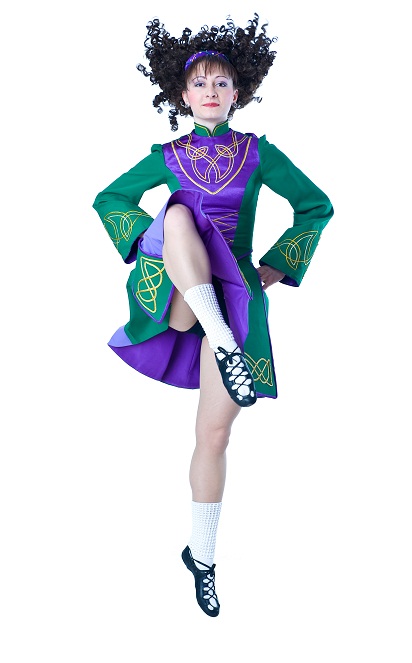Looking for Irish dancing movements? Want to know about all the different varieties of Irish dancing movements available? Read our guide for more information on choosing the right dance movements for you…
Irish dancing movements owe its origins to old style Irish step dancing that traces its lineage to the Pre-Christian era. The old style Irish dancing movements catered for ‘sean-nos dancing’ or solo dancing. The dancer would keep the arms loosely by the side during the dance. Only the feet would be used in the dancing movements. As a social dance form, the old style of Irish dancing was taught to a larger by traveling Irish dance masters.
Irish dancing movements involve the use of the feet with each dance step being danced twice. The dancer would first dance the step with the right foot then repeat with the left. Emphasis was placed on making percussive sounds with toes. The dancers all danced within a limited space – there were no fluid, sweeping or languid dancing movements that are prevalent in many modern dance interpretations.
Dance masters to adhere to particular tunes have choreographed dancing movements. Certain dancing steps have been fixed for particular tunes and definite Irish dancing movements can be seen in such dances as the Blackbird and St Patrick’s Day. These dance routines have become staples of modern Irish step dancing.
Irish dancing movements can be broadly distinguished into the soft shoe and hard shoe dances. In the soft shoe dance, time signatures differ between the reel, the single jig, the light jig and the slip jig. The time signature for a reel is 4/4 or 2/4 whereas the slip jig follows a 9/8 time. Hard shoe dances encompass the hard jig, which is in a slow 6/8 time signature and the treble reel. The music phrasings are regular and makes for very regulated and quick dancing movements.
‘Sean-nos’ Dancing Movements
The traditional solo ‘sean-nos’ Irish dancing movements exhibit footwork which is kept very low to the ground. The heels are not raised high and there are no singular kicks. The arms move freely, unlike the rigid arm movements of modern Irish step dancing. The steps are ‘battering’ rather than percussive. These battering steps tend to sound out the beat of the music more loudly.
Irish dancing movements are specific and particular to step dancing. Traditional tunes have specific dancing steps. Famous routines are now incorporated into modern Irish step dancing.





